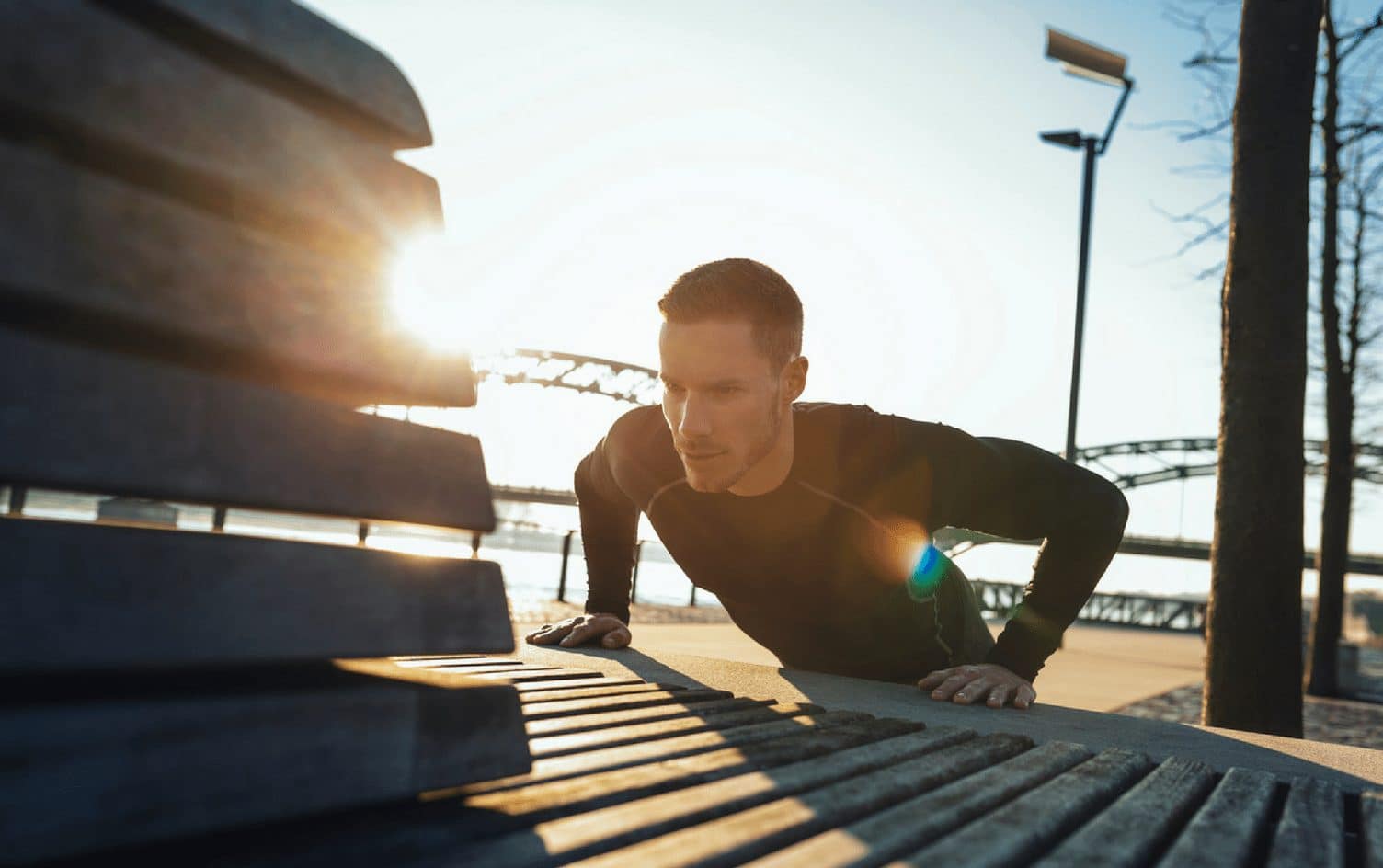When I was a competitive skier, I’d set up shop in a new country each week: The Zurich airport felt like home, and bathroom sinks doubled as laundry machines. Since it was my job to stay fit, that’s what I’d do. Even so, while it was easy to get outside, it was tough to maintain a typical fitness routine.
Traveling for work or pleasure definitely wreaks havoc on routines, but maintaining a level of fitness is possible, just not necessarily in the ways you’d think.
Here are five things you hardly hear (but should hear more often) about fitness on the go:
1. HOTEL GYMS AREN’T YOUR GO-TO
Researchers at the Cornell University School of Hotel Administration recently found hotel gyms rank among the most underused amenities, and that of the roughly 50% of guests who’d promised they’d use them, only 22% actually showed up. Sure, the reason could potentially be lack of motivation (or time), but hotel gyms often don’t have the right equipment (hello, treadmills and universal gyms).
Hotel gym equipment is also often not properly maintained; you may not be able to adjust it, or the cables could be sticky. Or maybe you’re quite strong, yet limited to the 20-pound dumbbells on hand.
2. YOUR BODYWEIGHT IS YOUR BEST FRIEND
When it comes to portable workout gear, your own bodyweight can be your best bet. While on the U.S. Ski Team, we did a lot of bodyweight moves in our hotel rooms. Sure, sometimes I’d get crafty and perform biceps curls with my ski boots or skis. (Note: I’m also guilty of writing stories in which I suggest filling water bottles to double as weights. In reality, they rarely weigh enough to challenge you outside of physical therapy-type exercises, so use them for hydration. Lift your bottle to drink the water. Period.)
When you use your bodyweight for exercise, you can easily tap into natural movement patterns and challenge your body harder (Read: push or pull more than 20-pounds of weight). You’ll also utilize core stability muscles.
Try squats, lunges, walking lunges, pushups, back-extensions, burpees and even yoga. Sun salutations can travel.
3. TRAINING LIKE A LOCAL HAS BENEFITS
Years ago finding running routes meant seeking out a local shop or chatting up the hotel concierge. But now you can see where others run using apps. It’s like having a personalized guide, because you can get the exact mileage and elevation gains you’ll experience, to be able to choose the level of your workout. Perhaps one of the biggest bonuses: Seeing where locals choose to run can also help keep you safe (and your runs scenic).
4. IT’S OK TO NAP THROUGH JET LAG
It’s no surprise jet lag is real, and repeated circadian rhythm disruption can cause a host of health issues, like a weakened immune system. What’s more, according to a study out of the University of California, Berkeley, it can also lead to decreased cognitive abilities. But that doesn’t mean you have to give up international travel.
What no one really tells you, is that even athletes feel jet lag, and while we’re all advised to adjust to daylight and new time zones as soon as possible, and to avoid sleep until the evening hours, sometimes it’s really helpful to just take a nap. Your body needs sleep. It’s as if you’ve pulled an all-nighter or skimped on zzz’s in general.
Though it’s ideal to exercise as soon as you get in (consider a long walk or a light run, and skip caffeine on the plane), if you snooze as soon as you land, you’ll still have time to enjoy normal daytime activities along with dinner, plus more sleep at night. If you can’t fall back asleep, read until you’re tired. Do what you can. And know that athletes sneak in sleep, too.
5. ALTITUDE IS REAL … AND REQUIRES SUNSCREEN
Again, no surprise, but a lot of folks forget about it, until they’re wondering why their regular 4-mile run feels so.much.harder. According to altitude.org, elevation isn’t ‘high altitude’ until about 8,000 feet. So if you’re planning a trip to the mountains (like in Colorado, Utah, Wyoming and even California), you may have to acclimate. Even lower elevations can cause shortness of breath during a run and possibly even dizziness and nausea (symptoms usually relegated to altitude sickness), depending on your sensitivity.
READ MORE > HOW HIGH ALTITUDE AFFECTS YOUR PERFORMANCE
The truth is, even athletes can feel altitude and need to adjust accordingly. If you’re going to higher elevations, you may need to cut back on your workout intensity. You’ll also need to be sure you’re wearing sunscreen. It’s the norm these days, but you’re more likely to suffer sunburn at higher elevations. A New York University School of Medicine study showed that ultraviolet intensity increases by 8–10% for every 1,000 feet above sea level (due to thinner layers of atmosphere). Slather it on.




